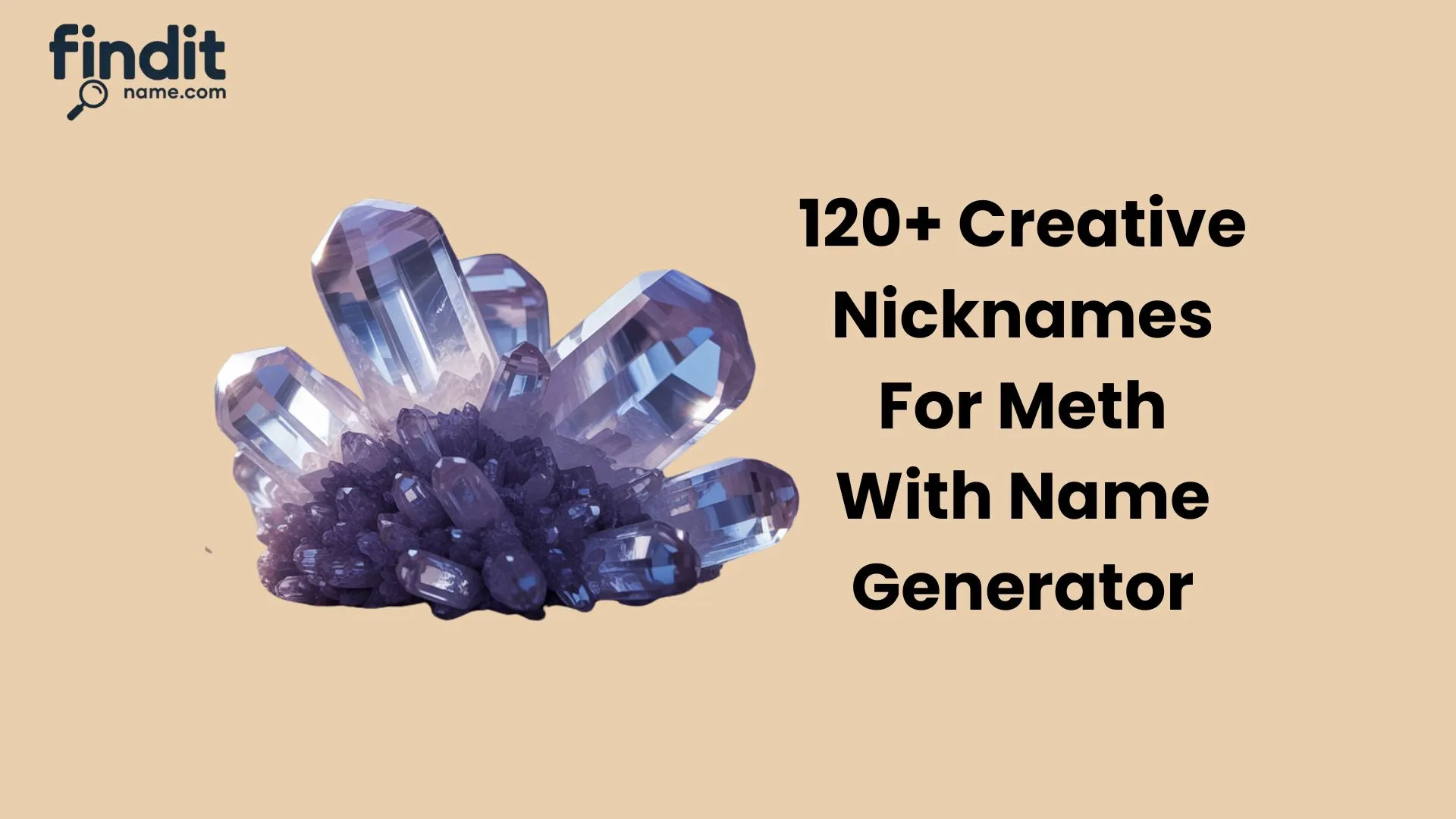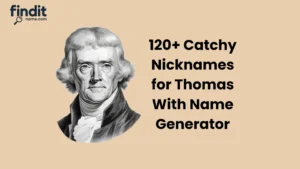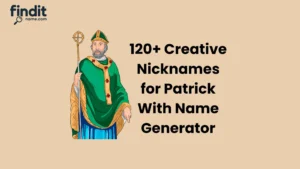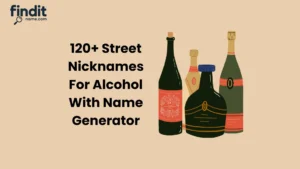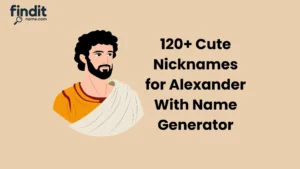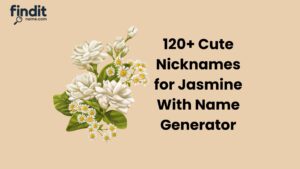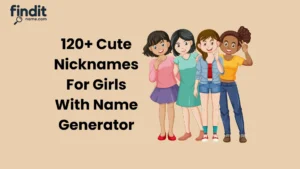When I first researched methamphetamine, I noticed that Meth Nicknames often reveal how deeply language influences our understanding of the drug. People shaped countless nicknames, slang, and street names to disguise this strong stimulant in daily conversation. They reflect cultural trends, regional differences, and efforts to change the image of meth. While some sound funny, cute, or unique, they often hide serious risks. My work in communities taught me that spotting warning signs through awareness, education, and prevention makes a real difference.
In my teaching, I often created tables and guides showing these names, their meanings, and origins with clarity. Following Google’s E-E-A-T principles- Experience, Expertise, Authoritativeness, and Trustworthiness– I’ve learned that accurate, valuable content builds trust. Meth is highly addictive, like other stimulants, impacting the central nervous system and leading to psychological and physical dependence. Historically, in the 20th century, amphetamine was used for nasal congestion and breathing impairments, but later it spread illicitly.
Even now, I discuss chemically different forms like methamphetamine hydrochloride, still a medical prescription medication for attention deficit hyperactivity disorder (ADHD) and obesity. Yet misuse has increased- between 2016, with 684,000 individuals diagnosed, and 2021, with 1.6 million cases. Working with Guardian Recovery, I saw how addiction and dependency overlap with alcohol and other substances. Effective detoxification services, focused detox, and long-term sobriety goals are vital. With evidence-based care, trained clinicians offer coping strategies to maintain recovery. I’ve shared information and helped people get started, proving early support truly matters.
Fun Fact 💡
Did you know that methamphetamine was originally developed in the late 19th century and was used during World War II to keep soldiers awake? Over time, it moved from military and medical use to becoming an illicit drug. Today, its street names continue to evolve, influenced by pop culture, music, and the need for secrecy.
Classic Street Names 🚬
Street names for meth are often created to mask the true identity of the drug. These names allow users and dealers to communicate without drawing unwanted attention. Common examples include terms inspired by appearance, effects, or abbreviations. Some names come from law enforcement reports, while others spread through music and popular culture. Understanding these terms can help parents, teachers, and communities recognize when meth is being discussed.
Meth’s classic street nicknames often sound simple but carry deep meaning. For example, names like “Ice” and “Crystal” reflect meth’s crystalline appearance, while “Chalk” relates to its powdered form. Some names focus on speed and energy, as meth is known for its intense stimulant properties. By learning these common terms, you’ll gain better awareness of how meth is referenced in everyday conversations.
| Nickname | Meaning | Origin |
| Ice | Refers to crystal meth’s icy appearance | Descriptive slang |
| Crystal | Short for crystal meth | Derived from drug form |
| Glass | Refers to meth’s glass-like shards | Street slang |
| Chalk | Powdered meth form | Common street term |
| Speed | Refers to stimulant effects | Popular culture |
| Tina | Slang code name | LGBTQ+ community slang |
| Crank | Old-school biker slang for meth | Motorcycle culture |
| Shards | Describes meth’s crystal shards | Visual description |
| Go-Fast | Slang for meth’s energizing effect | Street slang |
| Blade | Reference to sharp crystal pieces | Descriptive slang |
Funny Nicknames 😂
Funny nicknames often appear in casual conversations, making light of meth despite its serious nature. Humor has always been a way people cope with dangerous or taboo topics, and meth nicknames are no different. These terms often play on meth’s appearance, energy-inducing qualities, or exaggerations about its effects.
Some funny names might sound playful, but are still connected to the drug’s culture. For example, “Scooby Snax” and “Tweaker Fuel” are phrases that parody cartoon and pop culture references. While these names may bring a smile, they also show how meth has infiltrated mainstream language. Recognizing these terms is vital, especially for parents, teachers, and professionals in prevention or law enforcement. By being familiar with them, communities can better identify discussions about meth in less obvious forms.
| Nickname | Meaning | Origin |
| Scooby Snax | Pop culture parody referencing Scooby-Doo | Humor and cartoons |
| Rocket Fuel | Refers to intense energy from meth | Exaggeration slang |
| Zoom Powder | Nickname for meth’s speed effect | Playful slang |
| Tweak Juice | Refers to meth’s effects on users | Street humor |
| Hyper Dust | Highlights overstimulation | Comic exaggeration |
| Candy Crank | Parody of candy and meth slang | Wordplay |
| Turbo Salt | Suggests meth boosts speed | Slang creativity |
| Buzzy Rocks | Refers to meth crystals’ buzz | Fun descriptive slang |
| Jitter Glitter | Highlights jittery effects and a crystal look | Humor slang |
| Tweaker Fuel | Joke about fueling hyperactivity | Street humor |
Cute Nicknames 🌸
Cute nicknames for meth are surprisingly common in certain circles. These terms often disguise the drug in ways that sound lighthearted or harmless. By using “cute” language, users sometimes attempt to minimize the seriousness of the drug or make it more socially acceptable in conversation.
Words like “Pixie Dust” and “Fairy Crystals” borrow from fantasy themes, while others like “Sugar Rocks” lean on food-inspired sweetness. Despite the playful sound, these names still represent a very dangerous substance. Knowing these terms is important, as they may be used in conversations where the true meaning is hidden. Communities, parents, and educators who understand these nicknames can better identify warning signs.
| Nickname | Meaning | Origin |
| Pixie Dust | Fantasy-inspired nickname | Pop culture references |
| Sugar Rocks | Refers to meth crystals, disguised as sweet | Food-inspired slang |
| Fairy Crystals | Cute twist on crystal meth | Fantasy culture |
| Sprinkle Salt | Harmless-sounding nickname | Wordplay |
| Angel Ice | Softened version of “Ice” | Street slang adaptation |
| Cotton Candy | Innocent-sounding code | Food culture |
| Glitter Rocks | Meth compared to glittery crystals | Visual description |
| Frost Sprinkles | Cute way to reference meth shards | Wordplay |
| Lolly Dust | Candy-like reference | Food slang |
| Tiny Shards | Refers to meth’s small pieces | Descriptive slang |
Unique Nicknames 🌟
Unique meth nicknames stand out for their originality and cultural creativity. These are terms not as widely recognized as “Ice” or “Crystal”, but still hold importance in underground slang. Many unique names come from local regions, specific user groups, or trends that emerge in certain communities.
Some of these terms might sound completely unrelated to meth, making them even harder to detect in casual conversation. For instance, names like “Midnight Glass” or “Phantom Dust” feel mysterious and poetic. Others highlight meth’s appearance or the intense lifestyle around it. By keeping track of unique slang, professionals and families can stay one step ahead when it comes to understanding conversations about meth.
| Nickname | Meaning | Origin |
| Midnight Glass | Dark-themed twist on crystal meth | Street creativity |
| Phantom Dust | Mysterious, otherworldly nickname | Underground slang |
| Blue Spark | Rarely used, color-themed name | Local slang innovation |
| Frost Bite | Cold, icy effect reference | Wordplay |
| Star Shards | Crystals compared to stars | Fantasy slang |
| Thunder Rock | Intense energy comparison | Descriptive metaphor |
| Echo Dust | Poetic nickname, symbolizing lingering effect | Street slang |
| Night Powder | Refers to nighttime meth use | Community slang |
| Nova Glass | Crystal-like brilliance reference | Creative slang |
| Dream Ice | Euphemistic nickname for meth | Romanticized slang |
Romantic Nicknames ❤️
Romantic nicknames often come from how deeply meth can impact users’ lives, sometimes being referred to almost like a lover or obsession. These terms reveal how meth can be personified as something seductive and addictive. For many users, the relationship with meth feels personal, which is reflected in these kinds of nicknames.
Names like “Lady White” or “Crystal Lover” carry an almost romantic tone. They soften meth’s harsh reality by framing it in affectionate terms. Recognizing these names helps us understand how meth creates psychological ties beyond just physical addiction. These romantic nicknames are used to disguise conversations about meth or even describe the drug in artistic and cultural works.
| Nickname | Meaning | Origin |
| Lady White | Feminized, romantic name for meth | Personification slang |
| Crystal Lover | Depicts meth as a “lover” | Street romantic slang |
| Sweet Tina | Romantic spin on “Tina” | LGBTQ+ slang adaptation |
| Angel Love | Romanticized, soft nickname | Euphemistic slang |
| White Rose | Symbolic of meth crystals | Poetic metaphor |
| Darling Dust | Meth is described with affection | Romantic wordplay |
| Snow Bride | Nickname comparing meth to a bride | Romanticized slang |
| Love Crystals | Romantic reference to crystal meth | Euphemistic street term |
| Passion Powder | Suggests meth as a passion source | Romantic metaphor |
| My Lady Ice | Personified version of meth | Street slang |
Dangerous Nicknames ⚠️
Dangerous nicknames highlight meth’s intense and risky reputation. These terms often emphasize speed, destruction, or chaos. Many of them sound intimidating and reflect how meth impacts the body and mind. They are often used in underground conversations to convey both fear and respect for the drug’s powerful effects.
Names like “Demon Dust” or “Hell Rocks” reveal meth’s destructive side, while others such as “White Lightning,” focus on the intense energy surge it provides. These nicknames remind us of the dark reality behind meth use- something dangerous, addictive, and life-threatening. Understanding these terms is crucial for anyone working in prevention, law enforcement, or education, as they can act as signals in conversations where meth is being referenced indirectly.
| Nickname | Meaning | Origin |
| Demon Dust | Nickname linking meth to danger | Street slang |
| White Lightning | Intense energy effect comparison | Pop culture |
| Hell Rocks | Describes destructive crystal meth | Street metaphor |
| Fire Glass | Suggests burning intensity | Descriptive slang |
| Rage Powder | Highlights meth’s aggressive side | Street exaggeration |
| Chaos Crank | Meth tied to chaos and instability | Wordplay |
| Thunder Ice | Nickname showing explosive effect | Street slang |
| Venom Rocks | Symbolic of poison and danger | Creative slang |
| Death Shards | Meth linked to deadly consequences | Dark slang |
| Mad Glass | Suggests madness caused by meth | Street term |
Pop Culture-Inspired Nicknames 🎬
Pop culture has heavily influenced meth slang. References from movies, TV shows, and music often inspire new nicknames that spread quickly among communities. These names disguise meth while connecting it with familiar cultural touchpoints.
For example, “Blue Magic” and “Breaking Glass” stem from the famous TV series Breaking Bad, while “Superman Dust” links meth to superhero culture. These names can make meth sound glamorous or powerful, which is part of how slang works to normalize discussions around it. Recognizing these terms helps reveal how popular culture can unintentionally glamorize dangerous substances. Communities aware of these names can better educate young people about the realities behind the catchy slang.
| Nickname | Meaning | Origin |
| Blue Magic | Inspired by Breaking Bad’s blue meth | Pop culture TV reference |
| Breaking Glass | Play on the Breaking Bad theme | TV-inspired slang |
| Superman Dust | Refers to an energy boost like Superman | Comic culture |
| Joker Rocks | Dark pop culture-inspired nickname | Comic villain reference |
| Speedy Mario | Playful nod to video games | Gaming culture |
| Star Wars Ice | Sci-fi-inspired nickname | Film influence |
| Sonic Powder | Named after Sonic’s speed | Gaming pop culture |
| Wizard Crystals | Fantasy-inspired nickname | Pop culture fantasy |
| Matrix Dust | Inspired by The Matrix films | Movie slang |
| Pop Rocks | Play on candy and slang | Pop culture parody |
Regional Nicknames 🌍
Meth nicknames can vary widely depending on location. What is common slang in the U.S. may not be the same in Europe, Asia, or Latin America. Regional slang often reflects local culture, language, or even the appearance of meth in that area.
For instance, in Mexico, terms like “Vidrio” (Spanish for glass) are common, while in Southeast Asia, meth tablets are called “Yaba.” Regional slang provides important cultural insight and highlights how global meth use adapts to language and culture. Knowing these terms can help identify meth references in different communities worldwide.
| Nickname | Meaning | Origin |
| Vidrio | Spanish for glass, meth slang in Mexico | Latin American slang |
| Yaba | Thai nickname for meth tablets | Southeast Asia |
| Shabu | Common meth slang in the Philippines | Local slang |
| Batu | Means “rock” in Malay | Southeast Asia |
| Tik | Short for methamphetamine in South Africa | African slang |
| Cristal | Spanish version of “Crystal” | Latin American slang |
| Icey | Used in Australia for crystal meth | Regional slang |
| Batu Putih | Means “white rock” in Malay | Asian slang |
| Glassy | Local slang in UK communities | Regional English slang |
| Metha | Shortened local slang form | Various regions |
Food-Inspired Nicknames 🍭
Food is another surprising source of meth slang. These nicknames make the drug sound harmless by comparing it to sweets, drinks, or flavors. By doing so, users and dealers disguise conversations around meth in everyday language.
Examples include “Candy Glass,” “Sugar Rocks,” and “Cotton Ice.” These names sound fun and innocent, but are actually linked to dangerous substances. Understanding these nicknames is especially important for parents and educators because they could easily go unnoticed in everyday conversations. They also reflect how meth slang tries to downplay the drug’s severity.
| Nickname | Meaning | Origin |
| Candy Glass | Meth crystals compared to candy | Food-inspired slang |
| Sugar Rocks | Sweet-sounding disguise | Street slang |
| Cotton Ice | Fluffy cotton candy-inspired slang | Food parody |
| Lolly Crank | Play on lollipops and crank | Food wordplay |
| Frosted Candy | Crystal appearance compared to sweets | Street slang |
| Cookie Dust | Innocent-sounding nickname | Food disguise |
| Jelly Ice | Play with jelly candies | Food-inspired slang |
| Pop Candy | Mix of candy and pop culture slang | Food + culture reference |
| Honey Rocks | Sweet nickname for meth | Food disguise |
| Sugar Dust | Sweet-sounding but dangerous nickname | Food wordplay |
Code Names & Secret Nicknames 🔐
Code names are created to hide meth conversations from outsiders. These names are often subtle, creative, and designed to look unrelated. Dealers and users may invent code terms to avoid detection by law enforcement or to communicate secretly.
These nicknames might sound like everyday objects or phrases, making them hard to identify without context. Examples include “Glassware,” “Tools,” or “Party Powder.” By understanding code names, parents, professionals, and educators can recognize hidden conversations about meth and take action when necessary.
| Nickname | Meaning | Origin |
| Glassware | Code term for meth crystals | Secret slang |
| Tools | Hidden code referring to meth | Underground slang |
| Party Powder | Euphemism for meth at parties | Code slang |
| Frost Tools | Secret nickname based on appearance | Wordplay |
| Clear Rocks | Innocent-sounding nickname | Coded slang |
| Sharp Tools | Nickname hiding reference to shards | Secret slang |
| Snow Tools | Disguised reference to white crystals | Hidden slang |
| Mirror Dust | Subtle reference to shiny crystals | Euphemistic slang |
| Work Fuel | Secret code linking meth to energy | Disguised slang |
| Spark Glass | Innocent but coded reference | Code slang |
Final Thoughts 💭
Understanding meth nicknames, slang, and street names is more than just learning words- it’s about awareness, prevention, and protecting communities. Methamphetamine is a highly addictive stimulant that continues to impact lives worldwide. Its many nicknames, from “Ice” and “Crystal” to “Candy Glass” or “Demon Dust,” reflect how deeply it has influenced culture, language, and everyday conversations.
Parents, educators, and community leaders can benefit greatly from familiarizing themselves with these terms. Recognizing meth slang in conversations could provide early warning signs of drug use, allowing timely intervention. Law enforcement also uses these nicknames to track trends in drug trafficking, as slang often evolves faster than official terminology.
While some nicknames may sound funny, cute, or harmless, it’s important to remember that they all point to a dangerous and destructive drug. Meth use can cause severe health problems, including addiction, psychosis, and long-term physical damage. The playful language disguises a dark reality.
By staying informed, communities can break the stigma, spread accurate information, and support individuals at risk. Knowledge is a powerful tool, and understanding meth’s hidden language can help us create safer, healthier environments. Always approach the topic with compassion, awareness, and a commitment to education.
FAQs ❓
Why do people use nicknames for meth?
People use meth nicknames to hide conversations, avoid law enforcement, and make the drug sound less harmful. Slang also spreads through music, movies, and social groups, making it easier to disguise meth use. Recognizing these terms is important for parents, teachers, and communities to detect possible signs of drug activity early.
What are the most common street names for meth?
The most widely recognized street names for meth include “Ice,” “Crystal,” “Glass,” “Chalk,” “Crank,” and “Speed.” These names usually describe the drug’s appearance or effects. Learning these common terms helps people identify when meth is being discussed, which is especially useful in prevention, law enforcement, or supporting at-risk individuals.
Are meth nicknames the same worldwide?
No, meth nicknames vary across regions and cultures. In Southeast Asia, it’s often called “Yaba,” in the Philippines “Shabu,” and in Mexico “Vidrio” or “Cristal.” Regional slang reflects language and culture, but still refers to meth. Knowing these global variations helps families, educators, and professionals identify meth references in multicultural settings.
Why do some meth nicknames sound funny or cute?
Funny and cute meth nicknames, like “Pixie Dust” or “Scooby Snax,” make the drug seem less harmful and more socially acceptable. This minimizes the seriousness of meth use. Unfortunately, this playful language can normalize dangerous behavior. Recognizing these nicknames helps communities uncover hidden conversations and address the realities of meth use early.
How can parents recognize meth slang in conversations?
Parents can recognize meth slang by learning common nicknames, staying alert to unusual language, and paying attention to context. If words like “Ice,” “Crank,” or “Tweaker Fuel” appear often, it may signal drug use. Staying informed about meth slang allows parents to start conversations, provide guidance, and seek professional support when needed.

